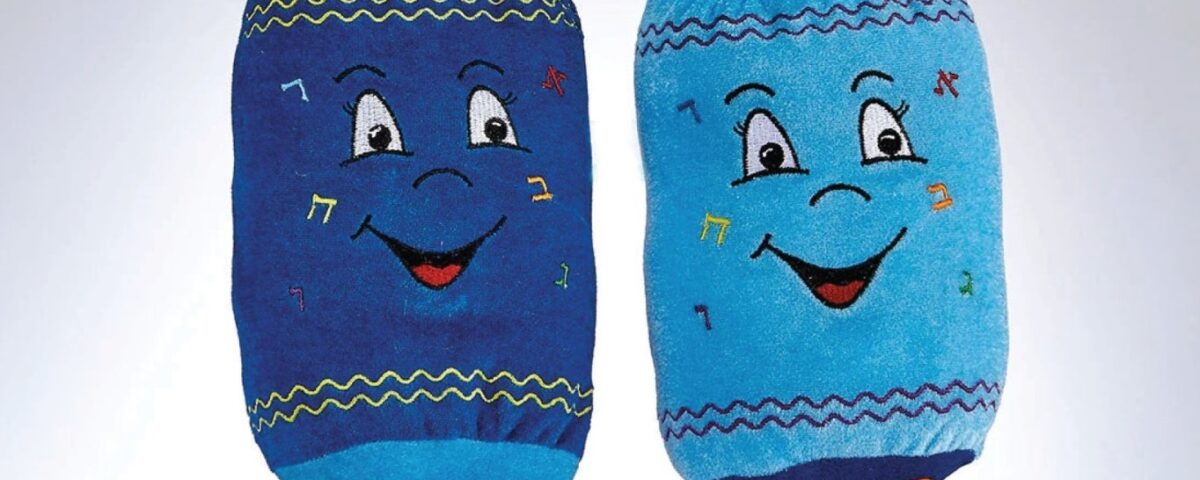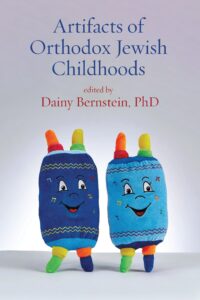REVIEW: Artifacts of Orthodox Jewish Childhoods

Artifacts of Orthodox Jewish Childhoods: Personal and Critical Essays, edited by Dainy Bernstein (Ben Yehuda Press, 2022), 292 pp.
Artifacts of Orthodox Jewish Childhoods is an unusual amalgam of two genres – one popular and one scholarly.
The popular genre is memoir. Over the past few decades, memoirs have become extremely popular. In this new essay collection, a number of writers who grew up Orthodox (some of whom remain part of the community; others have left the fold) reminisce about some aspect of their childhood. For example, Dr. Devora Steinmetz recalls her school beginning to teach Gemara in fifth grade, but only to the boys. Nevertheless, the teacher let her listen. Chanan Maister describes attending various day schools while unaware that his “Yechi” yarmulke was proclaiming that the late Lubavitcher Rebbe was the messiah. Dr. Leslie Ginsparg Klein enthuses about the high school plays in which she took part.
 The scholarly genre represented here is what academia calls material culture studies. This branch of anthropology focuses on “artifacts,”* namely anything created by people that can reveal information about the culture of its creator and users. Accordingly, the artifacts of childhood include its texts, music, and toys. A number of the essays apply the insights of that field to examine Orthodox childhood. For example, Dr. Yoel Finkelman notes the violence portrayed in Gadi Pollack’s illustrations for the popular The Katz Passover Haggadah. Goldie Gross and Yehudis Keller argue that tzniut diagrams (instructing girls how to dress modestly) do more harm than good. Shlomi Eiger shares the deliberations that went into the manufacture of dolls he designed for Haredim. These articles follow the scholarly convention of minimizing the personal connection of their authors to their subjects. This depersonalization, of course, is the opposite of the personal touch of a memoir represented by the contributions mentioned above.
The scholarly genre represented here is what academia calls material culture studies. This branch of anthropology focuses on “artifacts,”* namely anything created by people that can reveal information about the culture of its creator and users. Accordingly, the artifacts of childhood include its texts, music, and toys. A number of the essays apply the insights of that field to examine Orthodox childhood. For example, Dr. Yoel Finkelman notes the violence portrayed in Gadi Pollack’s illustrations for the popular The Katz Passover Haggadah. Goldie Gross and Yehudis Keller argue that tzniut diagrams (instructing girls how to dress modestly) do more harm than good. Shlomi Eiger shares the deliberations that went into the manufacture of dolls he designed for Haredim. These articles follow the scholarly convention of minimizing the personal connection of their authors to their subjects. This depersonalization, of course, is the opposite of the personal touch of a memoir represented by the contributions mentioned above.
The essays that I found the most interesting balance elements of both genres. Dr. Schneur Zalman Newfield recalls the Golem comic strip that his father read to him from The Jewish Press, and compares its anti-gentile messages with the negative attitudes he had to his Black neighbors in Crown Heights. Rabbi Dr. Hillel Broder unearths what he received in first grade, the Shilo siddur (which was probably the most widely used school-age siddur in the United States before Artscroll), and ponders the significance of its font sizes as well as the crayon drawings with which he decorated the siddur’s covers. Miriam Moster analyzes the lyrics of two of the Yeshiva Boys Choir songs that she plays for her family on Hannuka, and questions whether their messages are appropriate for her non-Haredi children.
Music seems to be the most memorable aspect of childhood, at least based on the topics chosen by these authors. Several of the essays deal with songs they sang in school or camp, and several others deal with albums to which they listened as children. These include Journeys, Pesach with Rebbe Alter, and The Marvelous Middos Machine. I was familiar with most of them from my own childhood, though perhaps those who grew up before me and after me would have appreciated essays about their generations’ music as well.
I found two of the essays to be especially insightful:
In Rabbi Elli Fischer’s discussion of Country Yossi’s lyrics, he points out the underlying attitudes they reveal towards various groups of people (such as misfits, non-Jews, children, rabbis, and women). He also suggests that the “frumified” lyrics are not simply parody but rather reframe the original songs in an Orthodox context.
Dr. Meira Levinson makes a case for Carol Korb Hubner’s fictional character Devora Doresh as a standout among the other female characters of Haredi children’s books. I was inspired by Levinson’s article to read or reread all the Devora Doresh stories. To be honest, I wasn’t impressed by the plots and detection, but Devora’s strong character stood out exactly as Levinson depicted.
What can we learn from Artifacts of Orthodox Jewish Childhoods when we view the collection as a whole? First, the book’s blurring of boundaries between the scholarly and the personal seems to work. It is refreshing to see that each academic author here feels free to choose how personal a tone to take in their writing – whether the “I” of the authorial presence is front and center, completely absent, or somewhere in the middle. Who says that scholarship is objective, anyway? As Rabbi Berel Wein has pointed out, “It is not that truth is a subjective value, but rather it is not possible, within the limitations of human existence, for truths to be accurately described, without the injection of the personality and the subjective viewpoint of the person recalling or describing the truth as to what occurred.” In the context of a project such as Artifacts of Orthodox Jewish Childhoods, it proves to be a positive development when scholars are open about their subjectivity.
Second, the book shows us that Jewish material culture is worthy of attention and study, along with the already-established fields of Jewish history and Jewish sociology. Actually, Artifacts of Orthodox Jewish Childhoods assumes the reader is already familiar with the study of material culture, and proceeds to present essays applying it to the authors’ own childhoods. The book might have benefited from a general introduction to material culture and an essay making the case that studying it can shed light on Orthodox life.
Third, when we read essays in which people recollect aspects of their childhoods, we might well muse, “I can do that too!” All of us were once children. We had our favorite toys and games, television shows, books, music, and so on. At the time, what did we think about them? In retrospect, what significance did they have on our development? How would we reevaluate them as adults? The answers to these questions will depend on each person’s unique experiences.
It is too easy to dismiss or ignore popular culture, especially that addressed to children. Artifacts of Orthodox Jewish Childhoods can help combat that dismissal, and might even inspire us to think seriously about the cultures of our own childhoods.
[* When I showed this book to a veteran educator, he was turned off by the title. “Artifacts”?! After all, outside of academic circles, the word “artifacts” has negative connotations, implying that the subject is antiquated. (Compare the word “myth,” which is neutral in academic circles and negative elsewhere.) As I explained above, “artifacts” is a scholarly term used in the study of material culture. But since this is unknown to most people (including me until recently), I’m afraid that its use in the book title is tantamount to an announcement that the book is only for professors and researchers. And that’s too bad. Because while Part I is indeed a collection of critical essays, most of the essays are more memoiristic than critical. I suggest a more accurate title for the book’s next edition: Memories, Music, and Material of Orthodox Jewish Childhoods: Critical and Personal Essays.]
Rabbi Uri C. Cohen is an independent scholar who teaches online at WebYeshiva.org and in person at one-year programs for Americans in Israel.
